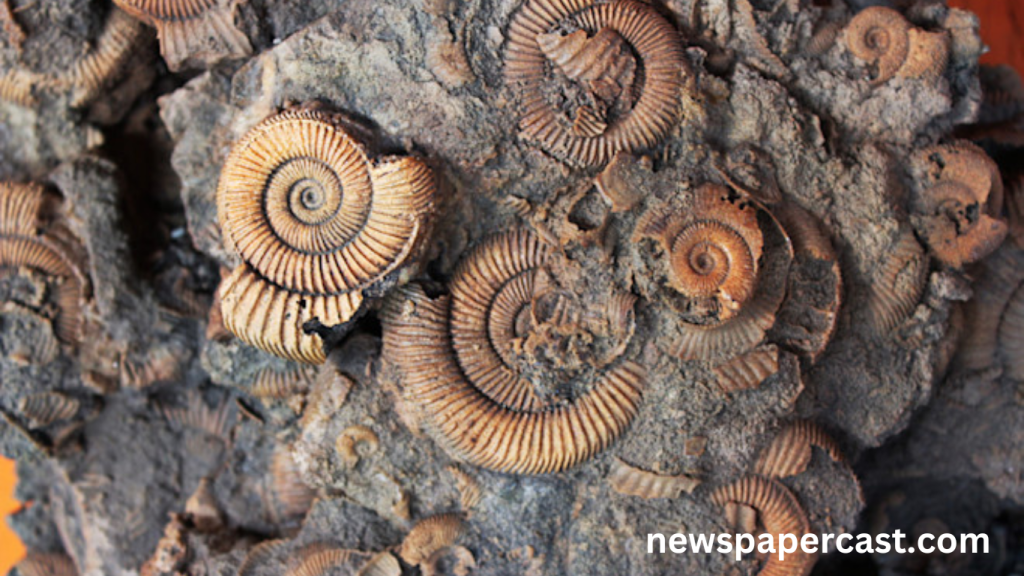Fossils are the preserved remains or traces of organisms that lived in the past. These remains give scientists a glimpse into ancient life forms and help understand the Earth’s history. However, fossils are predominantly found in sedimentary rocks. This article explains why sedimentary rocks are the ideal medium for fossil preservation.
The Formation of Fossils
Fossils form when organisms, such as plants or animals, are buried under layers of sediment. Over time, the sediments harden into rock, encapsulating the organism’s remains. In sedimentary rocks, this process occurs slowly, allowing for the preservation of delicate details, such as bones, shells, and imprints. These rocks create the perfect environment for fossil formation because they are composed of layers that accumulate over long periods, keeping organisms intact.
Why Sedimentary Rocks are Ideal for Fossils
Sedimentary rocks are unique because they form from the accumulation of sediments—such as sand, mud, and minerals—layered over time. This slow process allows for the preservation of biological material. Unlike igneous or metamorphic rocks, which form under intense heat and pressure, sedimentary rocks do not destroy the original structures of organisms, making them the best option for fossil preservation.
Read More : Supermassive Black Hole Heading Towards The Milky Way Galaxy
The Role of Water in Fossil Preservation
Water plays a crucial role in the formation of sedimentary rocks and fossils. Most fossils form in environments such as rivers, lakes, and oceans, where water helps transport and deposit the sediments that eventually form the rock. This process also aids in preserving organisms by covering them in sediment, which shields them from decomposition. Over time, these layers of sediment turn into rock, encapsulating the fossils for millions of years.
The Impact of Pressure and Heat on Fossils
While sedimentary rocks are ideal for fossil preservation, it is essential to understand that heat and pressure can affect fossils. During the rock-forming process, sediments undergo compaction and sometimes heat, which can distort or alter the original fossil. However, sedimentary rocks, such as shale and limestone, offer a relatively low-temperature environment compared to igneous or metamorphic rocks, which helps maintain the fossil’s integrity.
Why Fossils Are Rare in Other Rock Types
Fossils are rarely found in igneous or metamorphic rocks. These types of rocks form under extreme conditions—high heat, pressure, and molten activity—that destroy organic material. Igneous rocks, formed from cooled lava or magma, and metamorphic rocks, created under intense heat and pressure, essentially “cook” the organisms, breaking them down before they have a chance to fossilize. This is why fossils are almost exclusively found in sedimentary rocks.
The Process of Fossilization
Fossilization occurs when the remains of an organism are buried under layers of sediment. Over time, the organic materials are replaced by minerals from the surrounding environment. This process, known as permineralization, helps preserve the organism’s structure. Once the fossil is encased in sedimentary rock, it can survive for millions of years, providing valuable information about ancient life.
Types of Sedimentary Rocks That Contain Fossils
Several types of sedimentary rocks are particularly well-known for containing fossils. Limestone, shale, and sandstone are common examples. Each of these rocks has different characteristics, such as composition and texture, but all provide the necessary environment for the preservation of fossils. Fossils can be found in both the mineralized remains of organisms and the impressions left behind, such as footprints or burrows.
Frequently Asked Questions
Can fossils form in igneous rocks?
No, igneous rocks form under high heat, which destroys the organic material before it can fossilize.
Why are fossils more likely to be found in sedimentary rocks than in other types?
Sedimentary rocks form through the slow accumulation of sediments, preserving organic material more effectively than igneous or metamorphic rocks.
Can fossils form in metamorphic rocks?
Fossils are rare in metamorphic rocks because the heat and pressure involved in their formation destroy the remains of organisms.
What is the process of fossilization?
Fossilization occurs when sediments bury an organism, and minerals gradually replace its organic material over time.
How long does it take for fossils to form?
Fossils typically take thousands to millions of years to form, depending on the conditions of burial and preservation.
Can fossils be found in all sedimentary rocks?
Not all sedimentary rocks contain fossils, but certain types, like limestone and shale, are more likely to preserve them.
What types of organisms can become fossils?
Under the right conditions, almost any organism, from plants and insects to large animals like dinosaurs, can become fossilized.
What is the significance of fossils?
Fossils provide essential clues about the history of life on Earth and help scientists understand the evolution of species.
Conclusion
Fossils are primarily found in sedimentary rocks because these rocks provide the ideal conditions for preservation. The slow accumulation of sediments, along with the gentle pressure and temperature, helps preserve organisms for millions of years. This process allows scientists to unlock the mysteries of ancient life and understand Earth’s evolutionary history.

